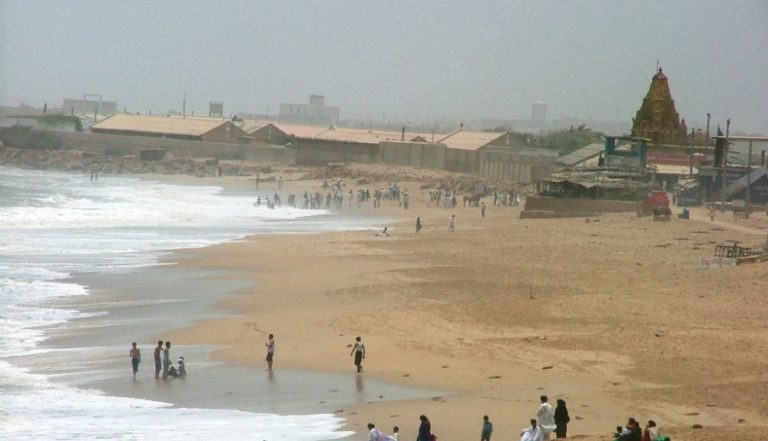
There are two dome-like structures, resembling each other in design but vastly different in size. The smaller one, located on the left side of the entrance, hosts a Shiv Mandir. The larger structure is dedicated to Varun Dev, also known as Lord Varuna.
By Mahnaz Shujrah
Each year when I visit the megacity of Karachi, I am reintroduced to the fast-paced, urban lifestyle which exists as a world of its own within Pakistan, as is a conglomerate of ethnicities, languages, traditions and faiths. The port city has a distinct vibe, with endless varieties of cuisine, historic buildings and cultural sites to be explored. However, like for everyone else, the global pandemic has changed my daily habits and, as an avid explorer, also my travel choices. So, this time I wanted to visit not crowded bazaars or food streets, but someplace which was in open air and less densely populated. This search is what led me to an island six kilometers off the coast of Karachi.
I have heard a great deal about Manora Island and remember visiting it as a child. It is a popular tourist destination for groups of friends and family alike. However, as a cultural enthusiast, I was not merely interested in the beaches there. Manora is a multicultural island, co-existing long before it was commercialized by vendors or used formally by the authorities. The island is home to a gurdwara, a shrine, and several temples along with other heritage sites.
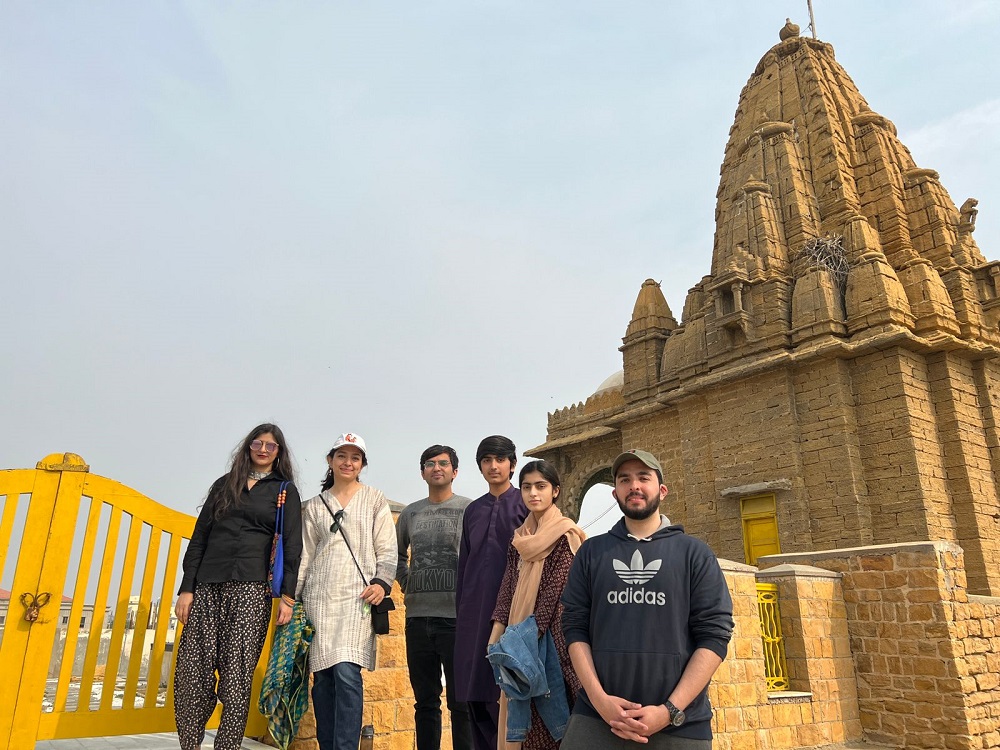
Once the boats dropped us off at the island, we walked down the main road all way to the Pakistan Naval Academy, around a fifteen-minute walk. From there we continued ahead with the famous Manora lighthouse in our sight, and the beach visible beyond the low-built wall on our right. In the distance we could see a large building with a dome like structure, resembling the architecture of a Jain mandir. We approached the site, with a yellow fence and gate, which was locked, closing off the site from entrance. On the wall next to it was a fading plaque reading “Varun Dev Mandir”. There was no one inside, and after trying but failing to find alternate entrances, our hopes of entering the historic site dwindled, and we continued to walk ahead. Treading along the main road again, one of our friends insisted we turn left, hoping to find a back entrance. To our luck and delight, we came across an open door, with a pathway leading to the mandir. Following the path, we came across the main, external entrance of the temple. On top there were three sculptures in a seated position, but the faces of these figures where broken and missing. The entrance was followed by a second, inner gateway, beyond which we could see the Varun Dev mandir.
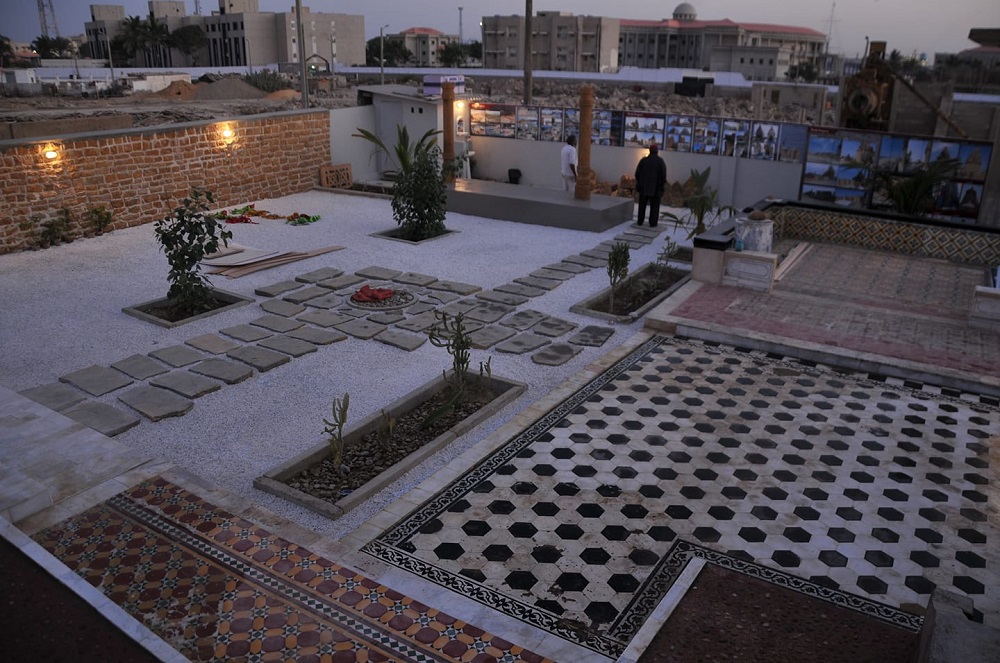
There are two dome-like structures, resembling each other in design but vastly different in size. The smaller one, located on the left side of the entrance, hosts a Shiv Mandir. The larger structure is dedicated to Varun Dev, also known as Lord Varuna, who is the god of the oceans in Hindu mythology. In the local context, Lord Jhulelal is also associated with the deity of Varuna, again related to water, and holding great importance for Sindhi Hindus in the subcontinent. Temples located near the water hold special meaning, just as this temple was built to look out for those at sea.
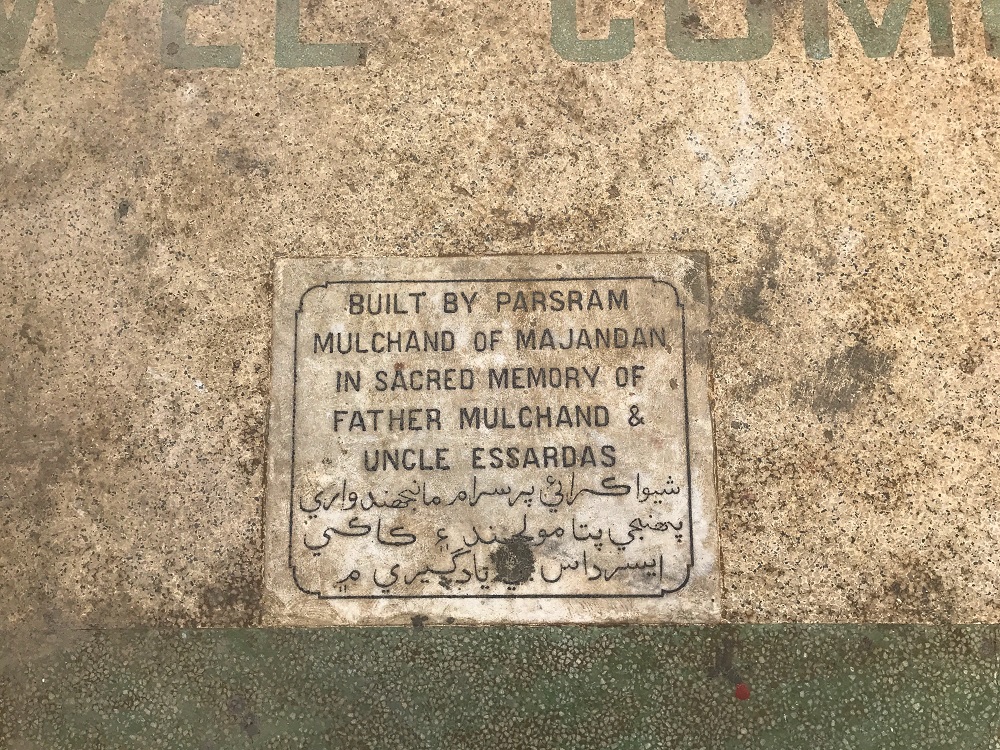
Built around 1300 years ago, the structure was deteriorating rapidly, and attempts to preserve it were small, scattered and feeble. Although the building underwent structural preservation around 1917, there was no proper method or plan for its conservation. Later, different influential figures, mostly from Sindh, contributed financially to keep the temple functioning. Many of the names of these contributors have been preserved on stone plaques, which are inlayed in the walls, as per the tradition of that time. In 1937, through such a contribution, tiles were placed on the front and inside the temple to upgrade the structure, not realizing that these attempts were counterproductive and damaging the heritage site, which urgently needed proper conservation and restoration efforts. Around 2016, the site was restored through the contribution of U.S Ambassadors’ Fund for Cultural Preservation and other local organizations. Since then, the mandir has been host to religious events and tourists.
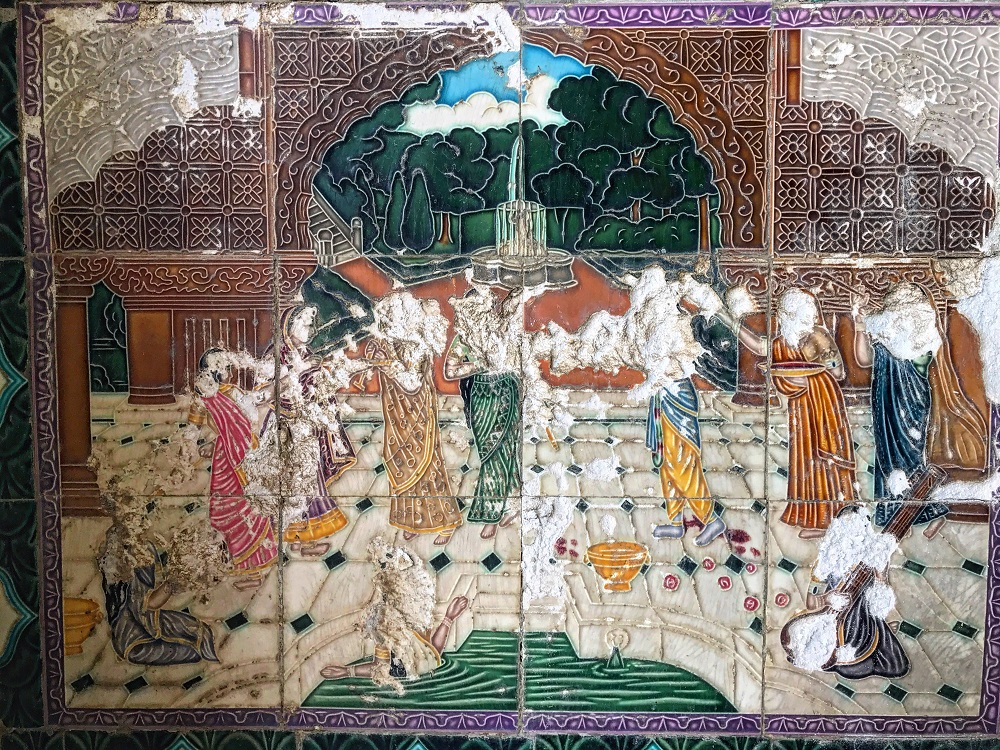
Even though the restoration efforts were successful in saving the valuable cultural heritage, sadly the site is not being maintained as it should be. The main gates of the complex are locked and the courtyard unkept. The caretaker was kind enough to show us around, but one person cannot manage everything around such an important site. Most disheartening was the vast construction happening next to and right behind the temple, ruining not only its aesthetic value, but also the essence of its religious significance.
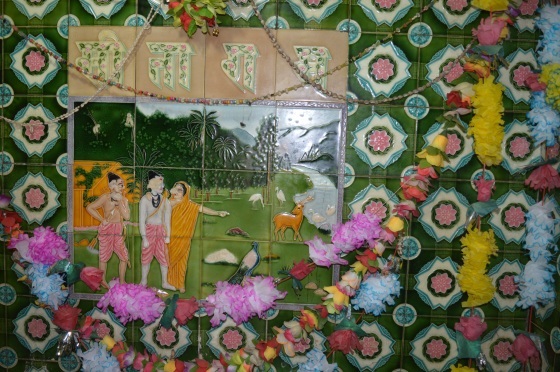 The low-key presence of such places is the beauty of exploration, however, this beauty comes as a double-edged sword, since hidden gems can be easily overlooked as they become buried under layers of changing times. In recent years, Manora Island has been developing the infrastructure required for a growing tourist attraction, and it is hoped that in this process equal attention and due respect would be paid to its heritage sites and local community.
The low-key presence of such places is the beauty of exploration, however, this beauty comes as a double-edged sword, since hidden gems can be easily overlooked as they become buried under layers of changing times. In recent years, Manora Island has been developing the infrastructure required for a growing tourist attraction, and it is hoped that in this process equal attention and due respect would be paid to its heritage sites and local community.
_________________
Courtesy: Youlin Magazine Posted on: January 11, 2022